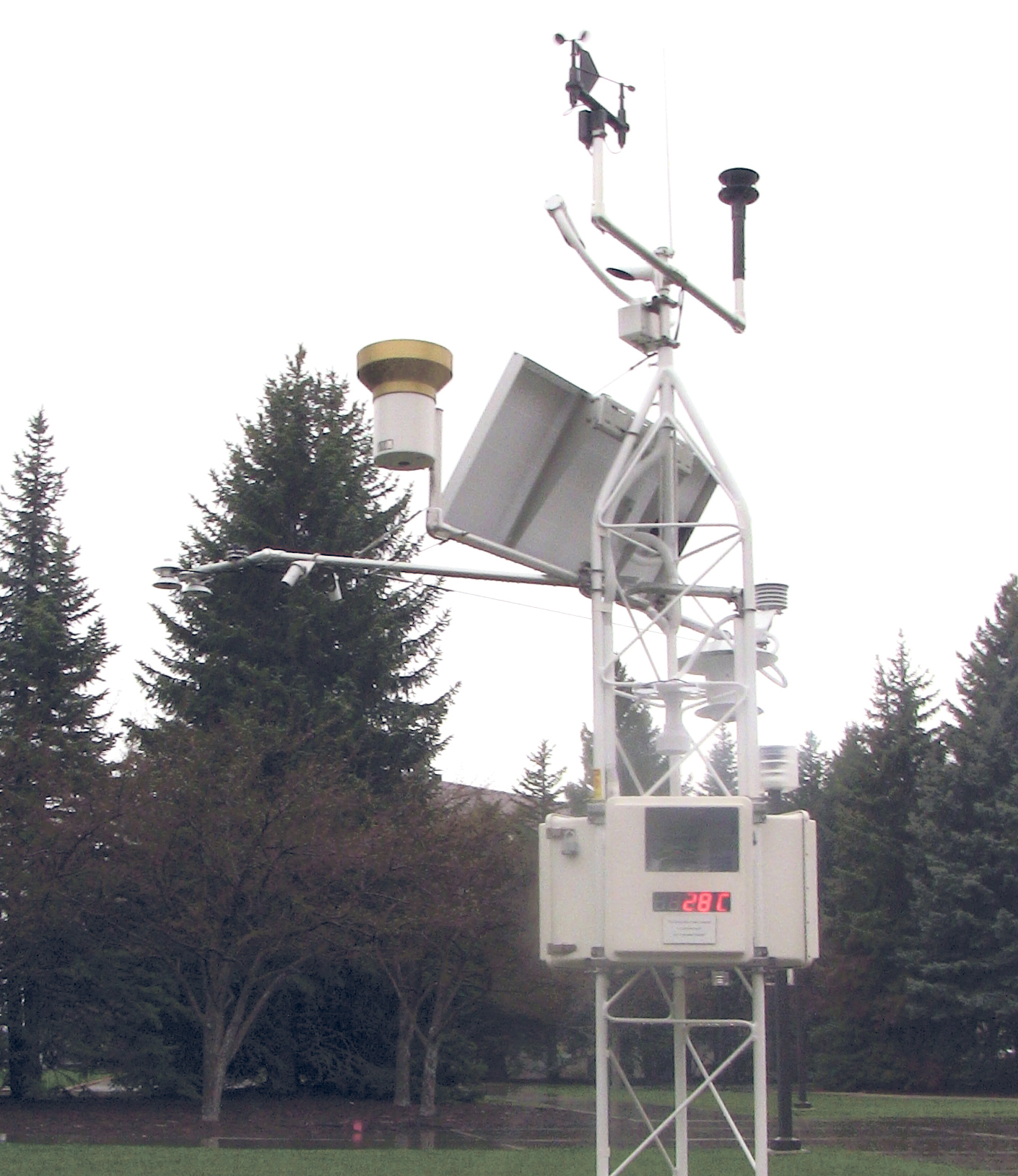Observatory to help track weather patterns
Predicting floods that plague Cache Valley may be a little easier now, thanks to something Bruce Bugbee calls a piece of art.
The official ribbon cutting for USU’s Environmental Observatory will take place Friday, April 22 at 1 p.m. The observatory, which sits on a small patch of grass between the Agricultural Science Building and the Taggart Student Center, is a 13-foot-tall solar powered environmental monitoring system that has sensors to track more than 17 weather-related conditions including wind speed, atmospheric visibility, temperature and ground moisture.
Bugbee, the faculty coordinator for the project, said the station is a technological centerpiece on campus. His hope is that eventually, the national weather service will use data from the Observatory.
“There is a parallel evolution, a revolution, really, in our ability to measure the environment,” he said. “We’ve been doing this for a thousand years, now we have computers to do it. In one sense you think this is kind of sad because you put all of these observers out of business, but it means we have better data. “
Jay Monson, a member of Logan City Council who will speak at the ribbon cutting, has been pushing the university to install an observatory for years. Monson, who spent 35 years as a USU professor, said people in Logan are often misled when they look at their temperature gages. The National Weather Service gathers data from an observation station at the Logan-Cache airport, an area that is statistically colder than campus. Retrieving information from sensors that are more accurate and central to campus will serve Logan as a whole, he said.
One of the biggest challenges in completing the project was starting it in the first place, Bugbee said. In order to acquire permits to start building, the team had to meet with a facilities council and decide on a design that would be appealing to the eye while making sure the observatory met certain criteria.
“Weather stations are usually a tangled mess of wires. They look like a bad day in a spaghetti factory. They work, but they don’t look very nice,” Bugbee said. “Not only did we not want people tripping on wires, but we wanted this to look like a sculpture. We worked very hard to make it elegant. You can imagine a bunch of geeky scientists trying to create a piece of art.”
The area the station is built in sits on a perched water table, which was a former parking lot. Because of this, the team has spent the last week trying to drill down past the mud and drain the water.
The station is valued at around $50,000, but nearly all of the parts were donated, said Bugbee. One of the largest contributors to the project is Campbell Scientific, a data acquisition company with headquarters in Logan.
In addition to the National Weather Service, students will have access to data weather for classroom use. Where before, a student in an environmental science class would have had to travel 10 miles to the nearest station, the location of the observatory will make it more accessible. Chris Parry, a graduate candidate who has helped build the station from scratch, said it is already opening up new educational opportunities.
“This helps me a lot in understanding the applications of the sensors,” he said. “It’s real-world work you’re doing here.”
This may be the most accurate environmental observatory on campus, but it is not the first.The original weather observatory, which sits behind the nutrition science building, has been functioning since 1893. Even with the new station, the old one will continue to collect data, said Bugbee.The scientists who have used data from the old observatory for years want a large spread of data from one source so they can better understand the Cache Valley environment.
Other things will come and go, but weather is universal, Monson said.
“Everyone is into the weather,” he said. “No matter where you go in the world, day in and day out, the weather is the most discussed item. It’s a big thing, an important thing.”
– allee.evensen@aggiemail.usu.edu

